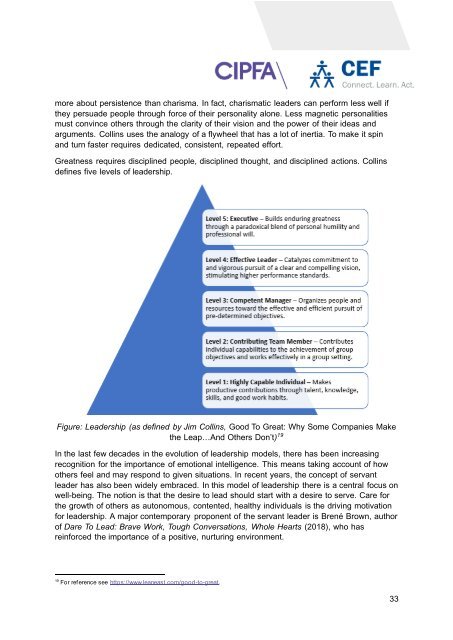TIAPS ALB_Module 2B. Managing People
- No tags were found...
You also want an ePaper? Increase the reach of your titles
YUMPU automatically turns print PDFs into web optimized ePapers that Google loves.
more about persistence than charisma. In fact, charismatic leaders can perform less well if<br />
they persuade people through force of their personality alone. Less magnetic personalities<br />
must convince others through the clarity of their vision and the power of their ideas and<br />
arguments. Collins uses the analogy of a flywheel that has a lot of inertia. To make it spin<br />
and turn faster requires dedicated, consistent, repeated effort.<br />
Greatness requires disciplined people, disciplined thought, and disciplined actions. Collins<br />
defines five levels of leadership.<br />
Figure: Leadership (as defined by Jim Collins, Good To Great: Why Some Companies Make<br />
the Leap…And Others Don’t) 19<br />
In the last few decades in the evolution of leadership models, there has been increasing<br />
recognition for the importance of emotional intelligence. This means taking account of how<br />
others feel and may respond to given situations. In recent years, the concept of servant<br />
leader has also been widely embraced. In this model of leadership there is a central focus on<br />
well-being. The notion is that the desire to lead should start with a desire to serve. Care for<br />
the growth of others as autonomous, contented, healthy individuals is the driving motivation<br />
for leadership. A major contemporary proponent of the servant leader is Brené Brown, author<br />
of Dare To Lead: Brave Work, Tough Conversations, Whole Hearts (2018), who has<br />
reinforced the importance of a positive, nurturing environment.<br />
19<br />
For reference see https://www.leaneast.com/good-to-great.<br />
33
















